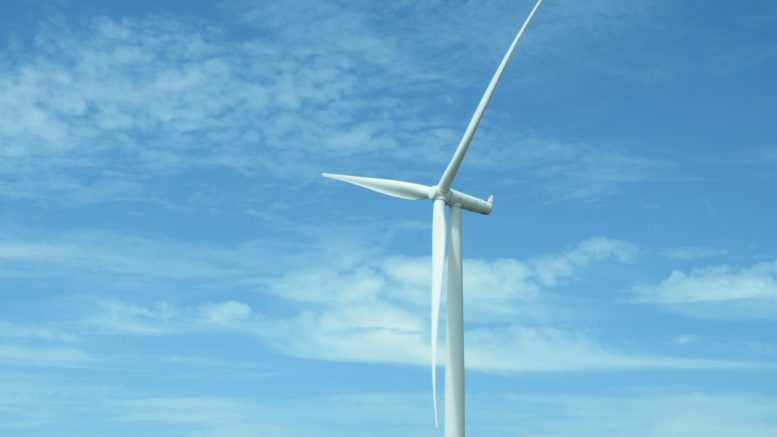Inuvik residents can expect a drop in their energy bill once the turbine near the community is fully operational early next year.
Construction on the Inuvik Wind Project started last month with a six-kilometre access road to Highpoint, about 12 kms outside of the community.
The project includes an 80-metre-high turbine and a power storage unit that will ensure consistent output on days with little wind.
“The opportunities, as it exists for Gwich’in business, will be within… the construction of the facility,” Gwich’in Grand Chief Ken Kyikavichik told reporters Wednesday afternoon.
Northland Builders is a Gwich’in-owned company and is responsible for building the access road.
Overall, the grand chief said the Inuvik Wind Project is “a great example” of collaborations between Indigenous government and the territorial and federal governments.
‘No concerns’ around reindeer
In 2020, the Nihtat Gwich’in Council asked for a judicial review of the permits given to the territorial government for the project. They argued the location of the proposed project was part of a designated area for reindeer grazing.
In January 2021, the council ultimately voted to rescind the court challenge.
On Wednesday, Grand Chief Kyikavichik said there were “no concerns” around possible impact to reindeer in the area.
CKLB asked what changed that led to the Nihtat Gwich’in removing its court challenge.
“The concerns were alleviated through the extensive environmental review that was undertaken by the Northwest Territories Energy Corporation. There was a traditional knowledge study that was conducted in collaboration with communities. And furthermore, there was clarity provided around the potential contracting and procurement opportunities that were available to which and business as a result of this project,” he said.
Reducing diesel consumption and emissions
Territorial officials said the turbine is projected to provide about 30 per cent of Inuvik’s energy.
That means reducing diesel use by about three million litres and bringing down emissions by six kilotonnes.
Part of the NWT government’s 2030 Energy Strategy is to reduce greenhouse gase emission from electricity generation by about 25 per cent.
Andrew Stewart is the director of strategic energy initiatives for the Department of Infrastructure. He explained that reduction would be about 18 kilotonnes of emissions, so the Inuvik Wind Project alone is about one-third of the reductions needed to meet that goal in the energy strategy.
However, late last year Diane Archie, minister of Infrastructure, said the territory still has to reduce overall emissions by about 244 kilotonnes to meet its reduction goal set out in the 2030 Climate Change Strategic Framework.
(Side note: The energy strategy and climate change framework are the two main plans guiding the NWT to meet its climate change goals of reducing emissions by 30 per cent below 2005 levels by 2030.)
“Right now in Inuvik, we have diesel as our main consumption but anytime we can reduce consumption of fossil fuels in a community is a good thing,” Archie said on Wednesday.
Correction Feb.24: A previous version of this story said Andrew Stewart is the director of energy for the Department of Infrastructure. That position is held by another individual, and Stewart’s title has been updated.





